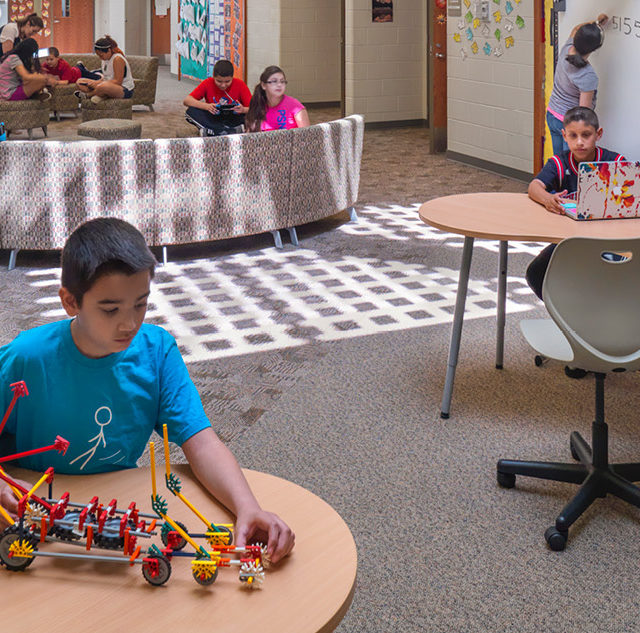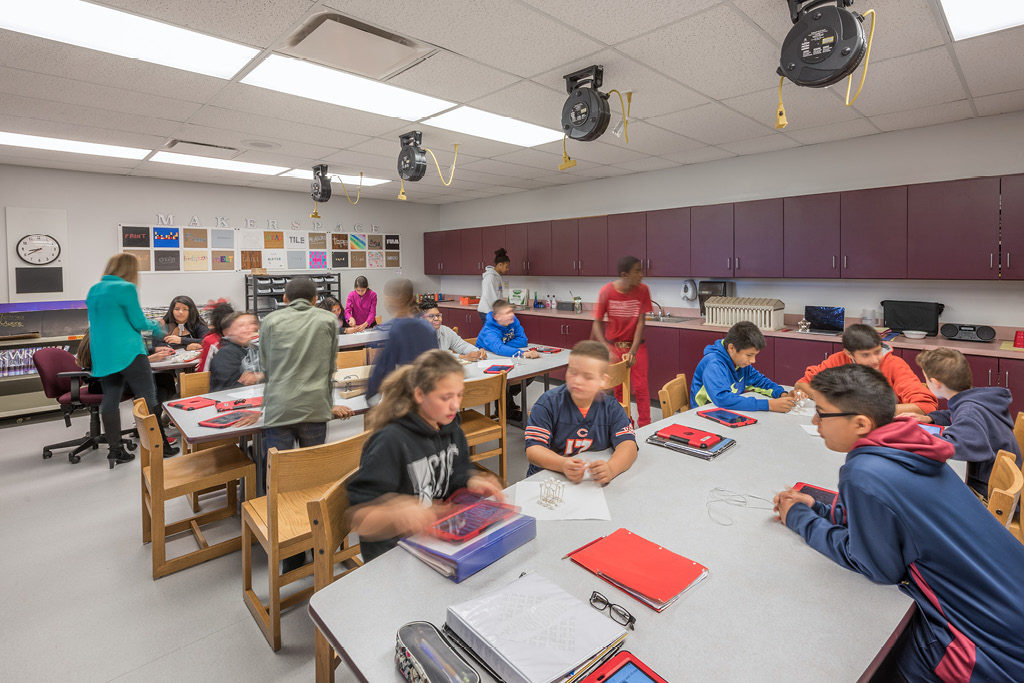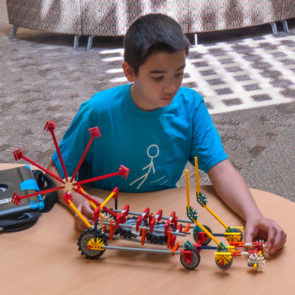Insights
Making Space for Makerspaces
By Steven Herr
Makerspaces are a buzz word of sorts because of the effectiveness maker culture has in engaging students, as well as the way it has reenergized teachers and communities. They are also a hot topic because they represent a school district that is ahead of the curve. The wide spread implementation of creative and entrepreneurial spaces at tech firms and universities has caught the eye of educators, and there are compelling reasons to follow suit in K-12 education.
Getting started with makerspace doesn’t have to be difficult. With a little creativity, you can start a makerspace in your school regardless of budget or available space.
What makes a makerspace?
Most educators seem to have an opinion about makerspaces. Asked to describe their school’s makerspaces or maker activities, and you are likely to hear a wide range of responses depending on teaching structure, student age range and the unique characteristics of their community. So what are common attributes of successful makerspaces?
In general, they promote learning through play, experimentation and teamwork. They bridge disciplines by mixing elements of science, technology and math with art, craft and communication skills. And, perhaps most importantly, they build student confidence by showing they can create rather than consume.
What do these spaces look like? The beauty is that you can start small, or you can plan to go big with a ‘statement’ space. There are interventions you can make at any scale and maybe the biggest take away from this blog post is that you should not let space deter you from getting started!
Small interventions
Finding space in existing buildings can be challenging because over time every room and closet has been claimed for departmental use or has been co-opted by individual staff for storage. The easiest way to get started is to use a larger space that is already being used for multiple functions. The room should be easy to rearrange to provide open floor space, and maker supplies should be mobile in order to tuck away or move to other learning spaces as needed.

Media centers have become popular impromptu makerspaces in many elementary schools, but activities are limited by scheduling and by the type and size of projects they can accommodate. The only tools you need to get started are mobile carts, supply bins for maker materials and display surfaces. Advantages of the media center location are that the high visibility can help build excitement in the learning community and create a neutral platform for cross-disciplinary activities.
Dedicated spaces
As schools have adapted to and invested heavily in technology, some traditional academic programs and classroom spaces have evolved, shrunk or disappeared. Over the past generation many school districts have made significant cuts to vocational, art and music programs. The irony is that there is an overwhelming amount of research highlighting the fundamental importance of these activities to learning and student success. The maker movement, coupled with a new emphasis on project-based learning, is creating exciting opportunities to re-imagine hands-on learning by fusing it to the high-tech tools of STEM disciplines.
Formerly separated, these academic programs and their large spaces are proving their relevance and to 21st century education. And, oh, the spaces! – high ceilinged shop and art spaces are ready-made to become maker spaces. Their location is usually in the ‘back-of-the-house’ where the space can be noisier, less tidy and visually distinct from the rest of the school. Further, they already have sufficient power and water available, and most often have fume and dust extraction systems in place. A clear advantage is they can accommodate larger projects or ones that take require a long timeframe to complete, and typically they also have direct exterior access which enables the learning space to expand outside when necessary.
So no matter your budget, spatial capacity or curriculum, maker spaces are a great addition to any school, and one that you can get started on today!
Designing School-Based Health Centers
By Dan ObrynbaSchool-based health centers are becoming integral components of public schools, primarily serving the needs of students and staff, with the potential to also serve the broader community. School-Based Health Centers are usually run by separate
Full ArticleSmart Schools Roundtable: School Safety by Design
By Zachary SprungerThe tragedy at Robb Elementary School in Uvalde, Texas, has once again brought the issue of school security into the national conversation. In 2020, Fanning Howey hosted a school security webinar featuring Michael Dorn, Executive
Full ArticleGuest Blog: Elementary School Addition Brings a Wave of Change
By Tracy Neely, Principal, Rosa Parks Elementary SchoolIn 2014, Middletown City Schools joined forces with Fanning Howey to revamp their facilities to better reach their students and community. One of the latest projects in this effort was a 28,930 SF addition to
Full Article